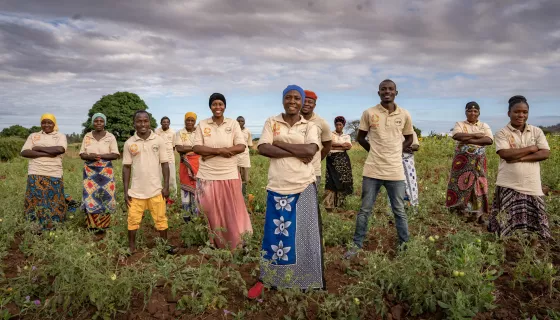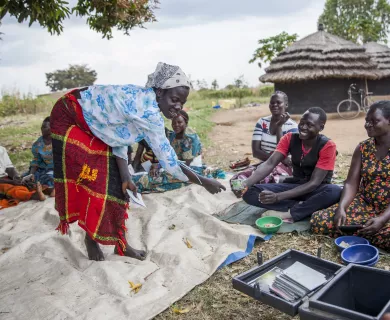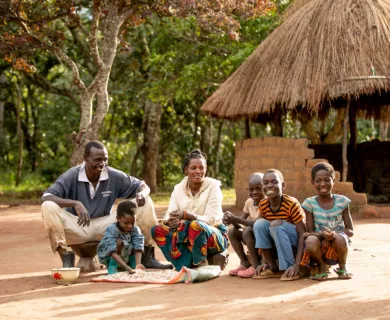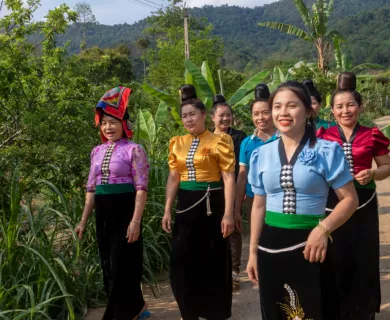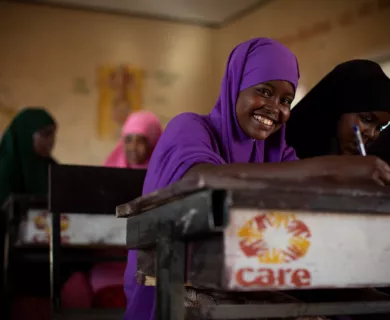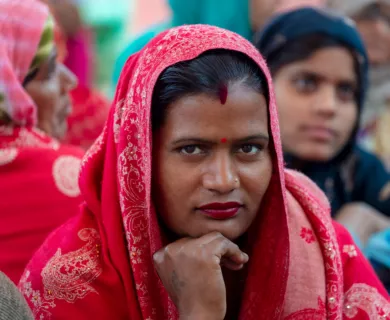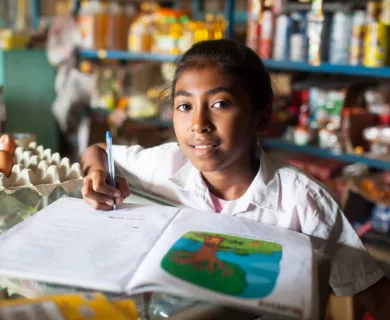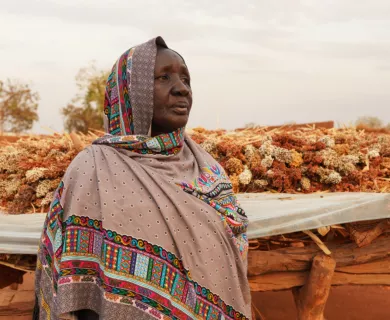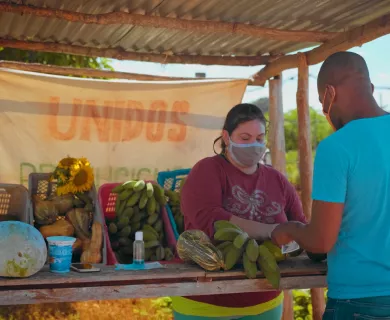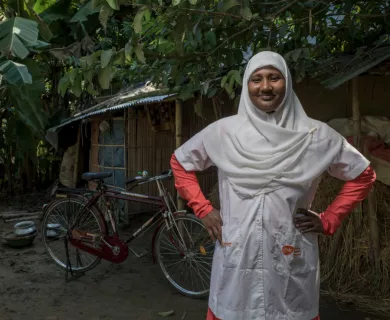CARE’s data tells us a story. It is the story of how CARE, partner organizations, governments and project participants are working every day to fight poverty, putting women and girls at the center. How we and our partners are helping to save lives and promoting social justice in over 100 countries.
This data-driven story allows us to listen. The numbers, stories and especially the voices of communities we strive to support collectively show us what we are doing right and where we need to improve. Listening tells us how we contributed to meaningful change.
Two paths towards change
We understand that CARE can contribute to change in two main interdependent ways. One is the short-term benefit of being involved in CARE and partners’ initiatives. The other is the long-term transformations that can happen in people’s lives in light of the Sustainable Development Goals established by the UN. This is what we call reach and lasting impact:
Reach: Our reach data reflects the number of people who participated in our programs in the last year, and are directly or indirectly involved in program activities.
- Direct reach includes those who receive support, services, goods, resources from CARE or partners.
- Indirect reach may include the families, friends or communities who further benefit from such actions.
For example, when we provide training to Wanda on how to improve and increase her dairy production, this is direct reach. Wanda can share what she has learned with family members, neighbors and friends. We consider these wider benefits for her family or others as indirect reach. Reach numbers refer to all of those participating directly or indirectly in CARE’s programs in a given year (July to June).
Lasting Impact: Our lasting impact data sets use a set of cumulative indicators over time that are aligned with the SDGs, and help us to monitor and learn how our actions and activities lead to longer-term improvements in people’s lives as a result of policy change or longer term program outcomes. The contribution to Wanda's production, for example, can help her have long-term increased income, contributing to reducing poverty (SDG 1), and greater influence in household decisions (SDG 5).
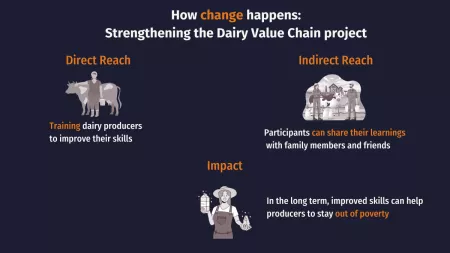
CARE is one of the few organizations around the globe that reports the contributions of our programs to the Sustainable Development Goals. The impact data reported shows the cumulative number of people for whom our programs have proven improvements since 2015, based on our core indicators of change. It reflects lasting transformations in people’s lives.
To learn more about how we measure change at CARE, please get in touch with us: [email protected].
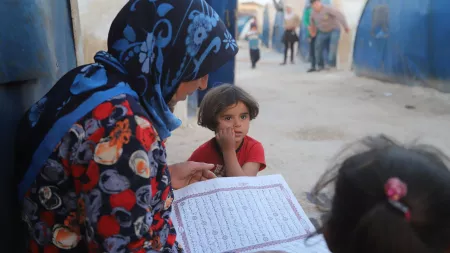
Learn more about how listening to data can improve humanitarian aid in this Ted Talk with CARE's Director for Knowledge Management and Learning, Emily Janoch.
Watch